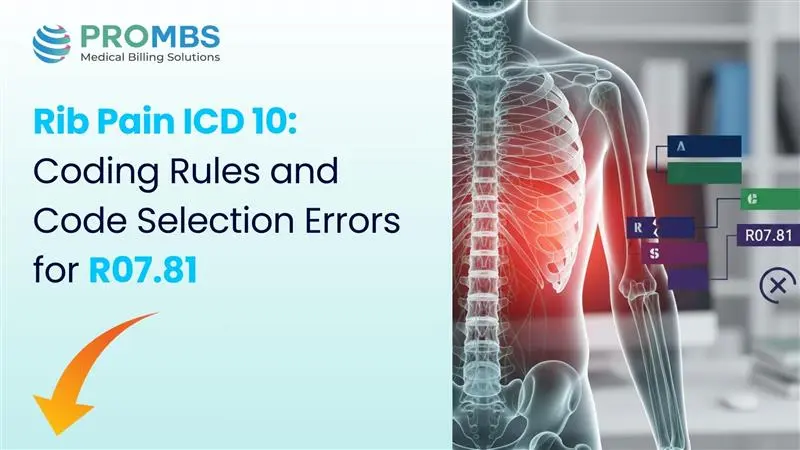The payer enrollment cycle is notoriously slow, often stretching to 90 days or more for every provider. According to the Council for Affordable Quality Healthcare (CAQH), delays in credentialing directly impact cash flow, patient access, and operational continuity for healthcare groups. To combat these inefficiencies, delegated credentialing for payers has emerged as a transformative model that allows large provider organizations to credential their own practitioners under payer-approved oversight. As per NCQA delegation standards, this arrangement transfers defined credentialing responsibilities from payers to qualified entities, significantly reducing turnaround times while maintaining compliance integrity. This article explores the structure, eligibility criteria, audit framework, and governance elements that make delegated credentialing the fastest path to network participation.
Eligibility & NCQA Standards for Delegated Credentialing for Payers
Implementing delegated credentialing requires rigorous adherence to standards that ensure quality, transparency, and accountability. According to NCQA’s Credentialing and Recredentialing (CR) standards, only organizations with proven credentialing infrastructure, peer review committees, and audit-ready documentation qualify for delegation.
| Criteria | Description | Compliance Benchmark |
|---|---|---|
| Organizational Readiness | Group must demonstrate credentialing policies, procedures, and committee oversight. | Documented credentialing policies and peer review minutes. |
| NCQA Alignment | Must meet NCQA CR 1–7 requirements, including verification sources and decision-making processes. | Verification completed within 180 days prior to decision. |
| Audit Capability | Evidence of internal quality audits and corrective action plans. | ≤5% variance in primary source verification accuracy. |
As per payer delegation policy frameworks, these criteria are validated through a pre-delegation audit that evaluates data integrity, staff competencies, and compliance monitoring mechanisms. According to industry standards, the goal is to create a consistent, NCQA-aligned process that produces the same quality outcomes as the payer’s in-house credentialing.
How Do Policies and Audits Ensure Credentialing Compliance?
A delegation agreement without robust policy infrastructure is unsustainable. According to NCQA CR 1 Element C, policies must clearly define credentialing timelines, verification requirements, and recredentialing intervals (typically every 36 months). These documents act as the backbone of the delegation contract and are audited periodically by payers.
As per payer audit protocols, delegated entities must maintain complete credential files including education, license verification, malpractice history, and sanction reports. Failure to maintain these standards can lead to suspension of delegation privileges. Based on best practices from major payers, credentialing entities should conduct internal audits every quarter to validate adherence to policy and maintain error rates below 5%.
According to NCQA’s delegation oversight guidance, payers perform an initial delegation audit within 180 days and conduct re-audits annually. These audits examine verification logs, credentialing committee minutes, and corrective action plans to ensure full transparency and compliance continuity.
Building a Roster Pipeline for Delegated Credentialing for Payers
The roster is the operational lifeline between the payer and the delegated entity. As per payer roster management standards, each file submission must accurately reflect provider identifiers, effective dates, credentialing status, and network participation details. According to industry benchmarking data, 70% of onboarding delays stem from inaccurate or incomplete rosters, making data quality a key performance driver.
Roster Format Standardization
Most payers accept standardized formats such as CSV, XML, or API-driven feeds. Consistency in data structure allows automated ingestion into payer systems and reduces manual reconciliation.
Data Validation
Delegated entities must implement automated data validation to detect errors like missing NPIs or expired licenses before submission. Regular reconciliation with internal HR and compliance systems ensures the integrity of transmitted data.
Submission Frequency
High-volume organizations submit rosters weekly or biweekly to maintain real-time network updates. Frequent submissions not only prevent enrollment bottlenecks but also improve visibility into provider status changes, credentialing expirations, and demographic updates.
| Credentialing Model | Average Turnaround Time | Primary Oversight Entity |
|---|---|---|
| Traditional (Payer-Managed) | 60–90 days | Payer Credentialing Team |
| Delegated (Group-Managed) | 15–30 days | Group’s Credentialing Committee |
| Hybrid Model | 30–45 days | Shared Oversight (Payer + Group) |
As per payer onboarding reports, the delegated model demonstrates a 50–60% reduction in processing time compared to traditional credentialing.
How Can Organizations Avoid Pitfalls and Compliance Gaps?
While the delegated model accelerates onboarding, it introduces operational and compliance risks if not managed properly. According to payer delegation audits, the most common pitfalls include incomplete primary source verifications, inconsistent credentialing committee documentation, and delayed recredentialing.
Failure to maintain current licensure and malpractice monitoring can trigger immediate corrective action plans. Based on payer compliance guidelines, any discrepancy in credentialing decisions, such as granting network participation before verification completion, constitutes a major compliance breach.
Additionally, according to healthcare risk management experts, inadequate version control of rosters can lead to mismatched provider data across payer systems, resulting in claim rejections and network inactivation. To mitigate these issues, delegated entities must adopt automated versioning, internal audit trails, and real-time status dashboards.
SLA & Governance Model in Delegated Credentialing for Payers
Strong governance and SLAs are critical for maintaining payer confidence. As per standard delegation agreements, Service Level Agreements (SLAs) define processing timelines, accuracy thresholds, and escalation procedures.
| Role | Responsibility | Review Frequency |
|---|---|---|
| Credentialing Committee | Approves new providers and reviews recredentialing outcomes. | Monthly |
| Quality Oversight Team | Audits verification logs and monitors error rates. | Quarterly |
| Payer Delegation Liaison | Manages communication, audits, and roster submissions. | Weekly |
According to NCQA delegation oversight requirements, payers retain ultimate responsibility for credentialing quality even when functions are delegated. Therefore, governance models must include defined reporting channels, corrective action timelines, and performance scorecards.
Quarterly business reviews and joint operating committees are recommended to review SLAs, error metrics, and compliance performance. Based on payer-organization partnerships, a mature governance model also integrates key performance indicators such as turnaround time, audit pass rate, and roster accuracy percentage, ensuring accountability on both sides.
NCQA Audit Readiness Checklist
Every delegated organization must sustain a documented readiness program designed to demonstrate continuous compliance with credentialing standards. According to NCQA’s delegation audit framework, this readiness model emphasizes proactive evidence management, ensuring that each credentialing action, verification, and committee decision can be fully traced, validated, and audited without exception.
| Audit Component | Required Evidence | Frequency |
|---|---|---|
| Credentialing Policy Review | Updated policies reflecting NCQA CR standards. | Annual |
| Primary Source Verification Logs | Evidence of license, education, and sanction verifications. | Each provider file |
| Credentialing Committee Minutes | Proof of peer review and credentialing decisions. | Monthly |
| Corrective Action Tracking | Documentation of any identified deficiencies and resolutions. | Continuous |
| Audit Trail Documentation | Version control and file retention logs. | Ongoing |
Entities that implement an internal quality assurance cycle and maintain ongoing compliance documentation are consistently able to meet or exceed payer audit requirements. As per audit readiness guidelines, such organizations exhibit measurable audit maturity, reflected in reduced variance rates, minimal corrective actions, and sustained delegation status during NCQA and payer oversight reviews.
Partner with Pro-MBS for Faster Delegated Credentialing
Delegated credentialing accelerates payer onboarding but requires strict NCQA compliance, accurate rosters, and ongoing audit readiness. Pro-MBS combines credentialing expertise with specialized assessments to help you launch delegation with confidence and protect revenue from day one:
- Free Credentialing Audit: Identify compliance gaps and readiness issues before moving to delegation.
- Bleeding Revenue Scan: Detect missed enrollment opportunities and hidden cash-flow leaks.
- NCQA-Aligned Policy Setup: Establish clear, audit-ready credentialing policies and workflows.
- Automated Roster Validation: Ensure clean, accurate, and timely submissions to payers.
- SLA-Driven Governance & Monitoring: Maintain consistent performance, compliance, and payer trust.
With our data-driven risk assessments and end-to-end support, Pro-MBS helps provider groups cut onboarding times by over 50% while strengthening compliance and preserving revenue.
FAQs
What is delegated credentialing for payers?
Delegated credentialing is a process where payers authorize qualified provider organizations to credential their own practitioners under NCQA-compliant policies. This reduces onboarding delays and improves provider network participation.
How does delegated credentialing differ from traditional credentialing?
In traditional credentialing, payers handle all verification, which often takes 60–90 days. Delegated credentialing shifts this responsibility to the provider group, cutting turnaround times to 15–30 days while meeting payer oversight standards.
Who qualifies for delegated credentialing?
Organizations with robust credentialing policies, peer review committees, and proven audit readiness can qualify. Meeting NCQA CR 1–7 requirements and maintaining accurate verification processes are essential.
Why is delegated credentialing faster than payer-managed processes?
Since verification and decision-making occur within the provider organization, it removes payer backlogs and accelerates onboarding. Automated rosters and policy-aligned workflows further streamline the process.
What role does NCQA play in delegated credentialing?
NCQA sets the standards for credentialing policies, documentation, and verification accuracy. Payers use these standards to evaluate a group’s readiness and ensure delegated entities maintain the same quality as their in-house process.
What is a pre-delegation audit?
A pre-delegation audit assesses an organization’s credentialing infrastructure, staff competencies, data quality, and compliance mechanisms before granting delegation authority.
How often are audits performed in delegated credentialing?
Payers typically conduct an initial audit within 180 days of delegation and follow up annually. Many organizations also perform quarterly internal audits to stay audit-ready.
What is a roster in delegated credentialing?
A roster is a standardized list that provides payers with accurate details on provider credentials, statuses, and network participation. It’s key to avoiding onboarding delays and claim issues.
How can automated roster validation help?
Automated validation detects missing NPIs, expired licenses, and data inconsistencies before submission. This reduces errors, speeds up approvals, and ensures compliance with payer requirements.
What are common pitfalls in delegated credentialing?
Frequent issues include incomplete primary source verifications, delayed recredentialing, and inconsistent committee documentation. Poor roster version control can also cause claim rejections and compliance breaches.



